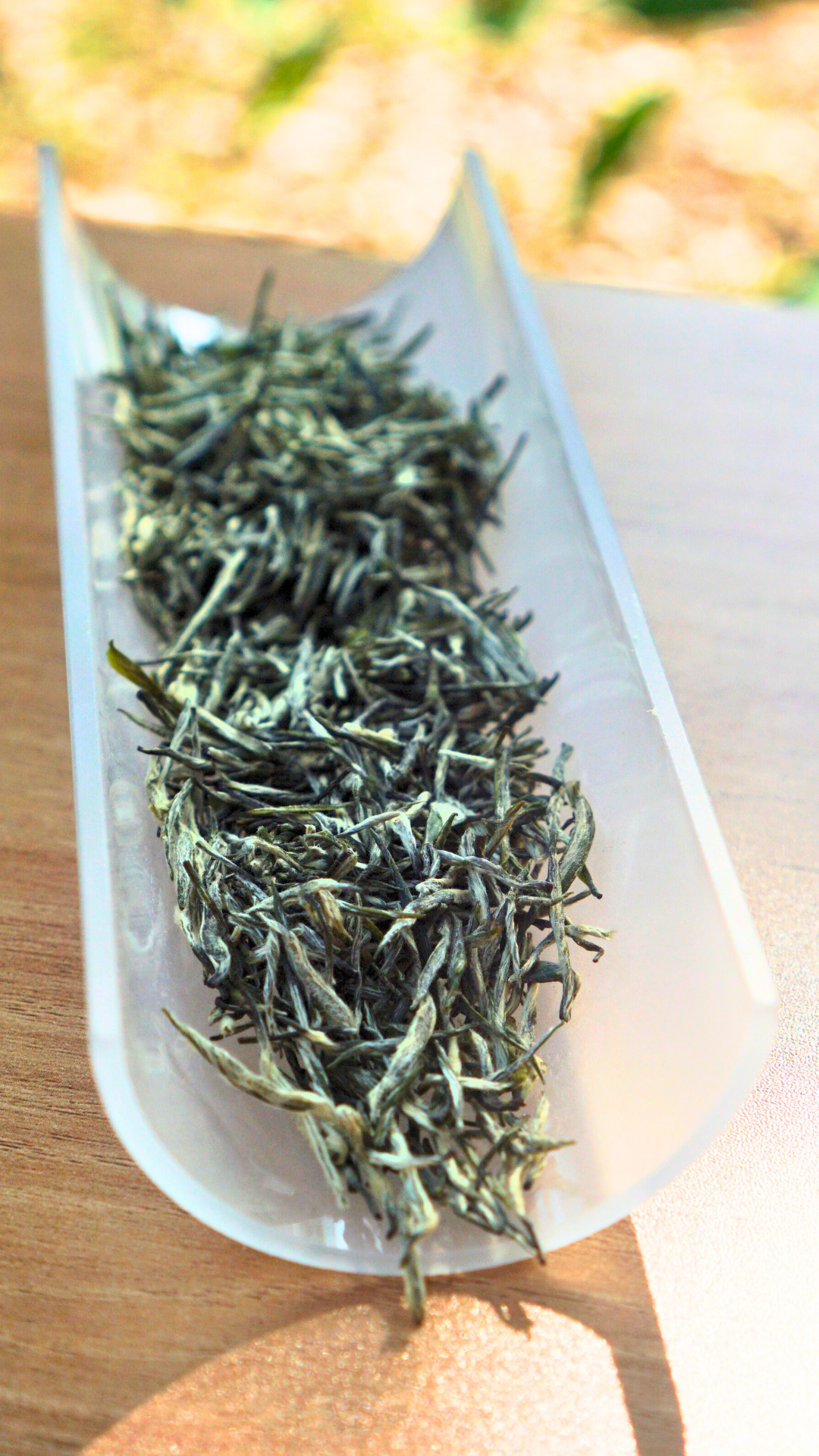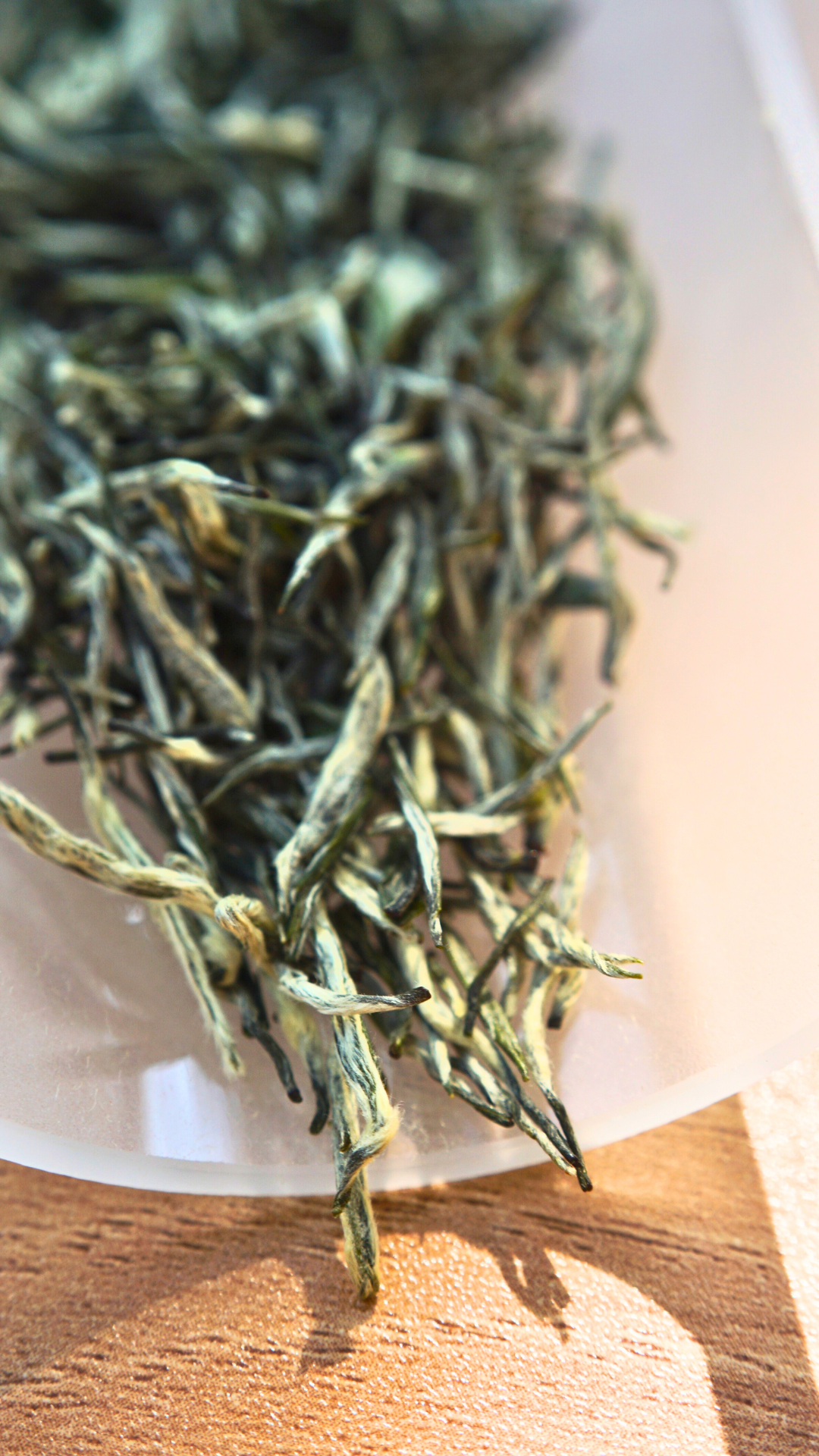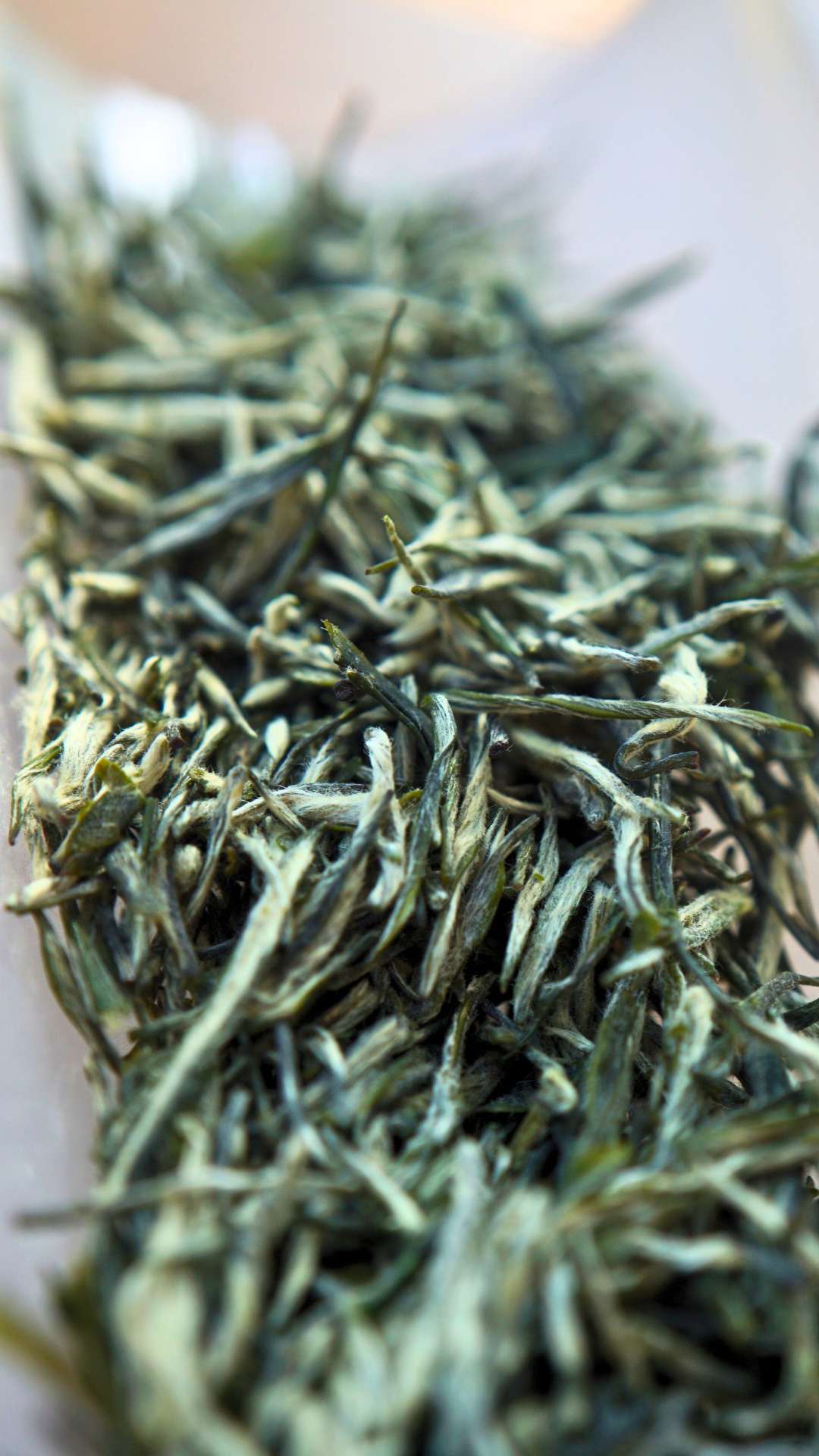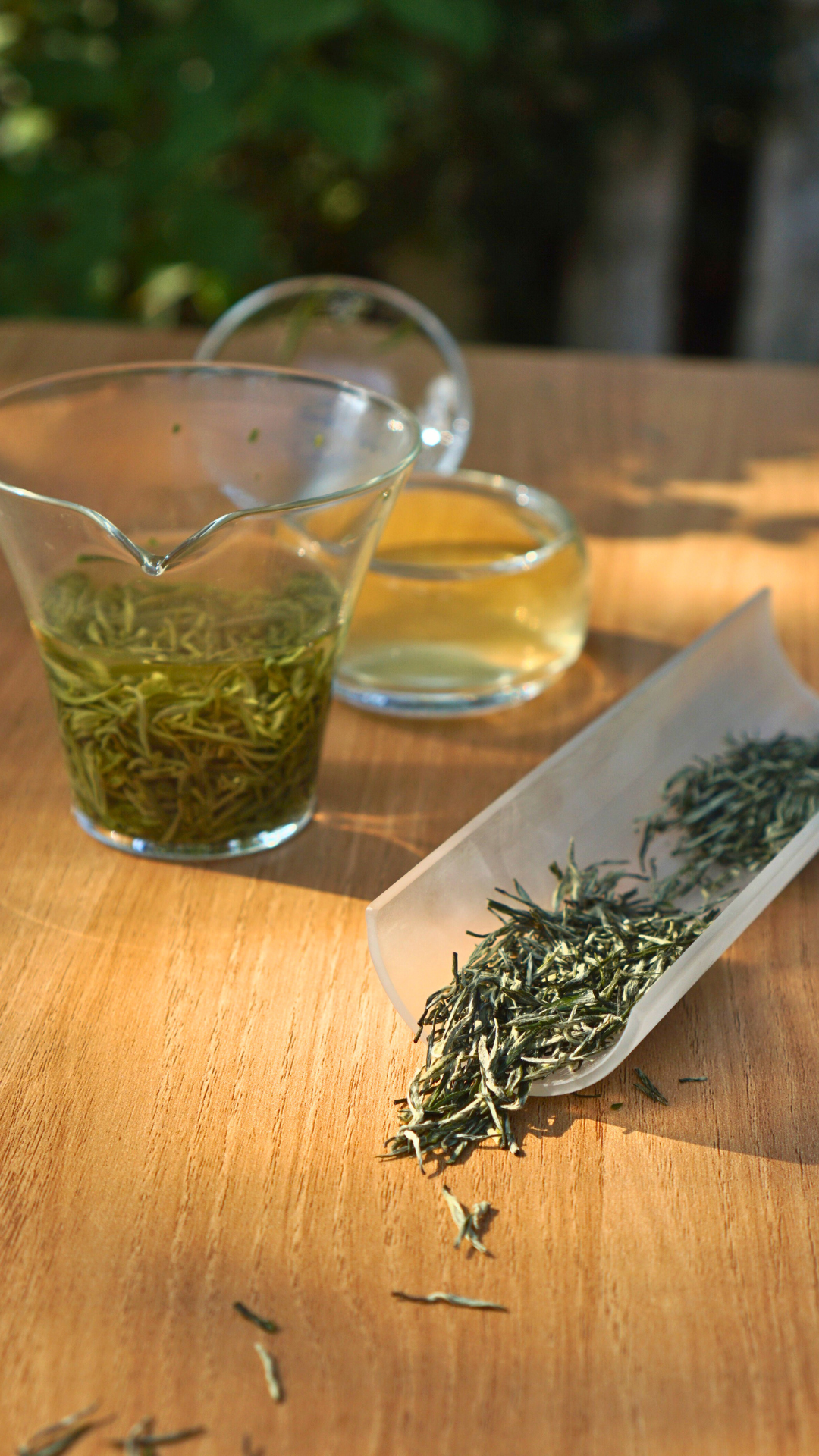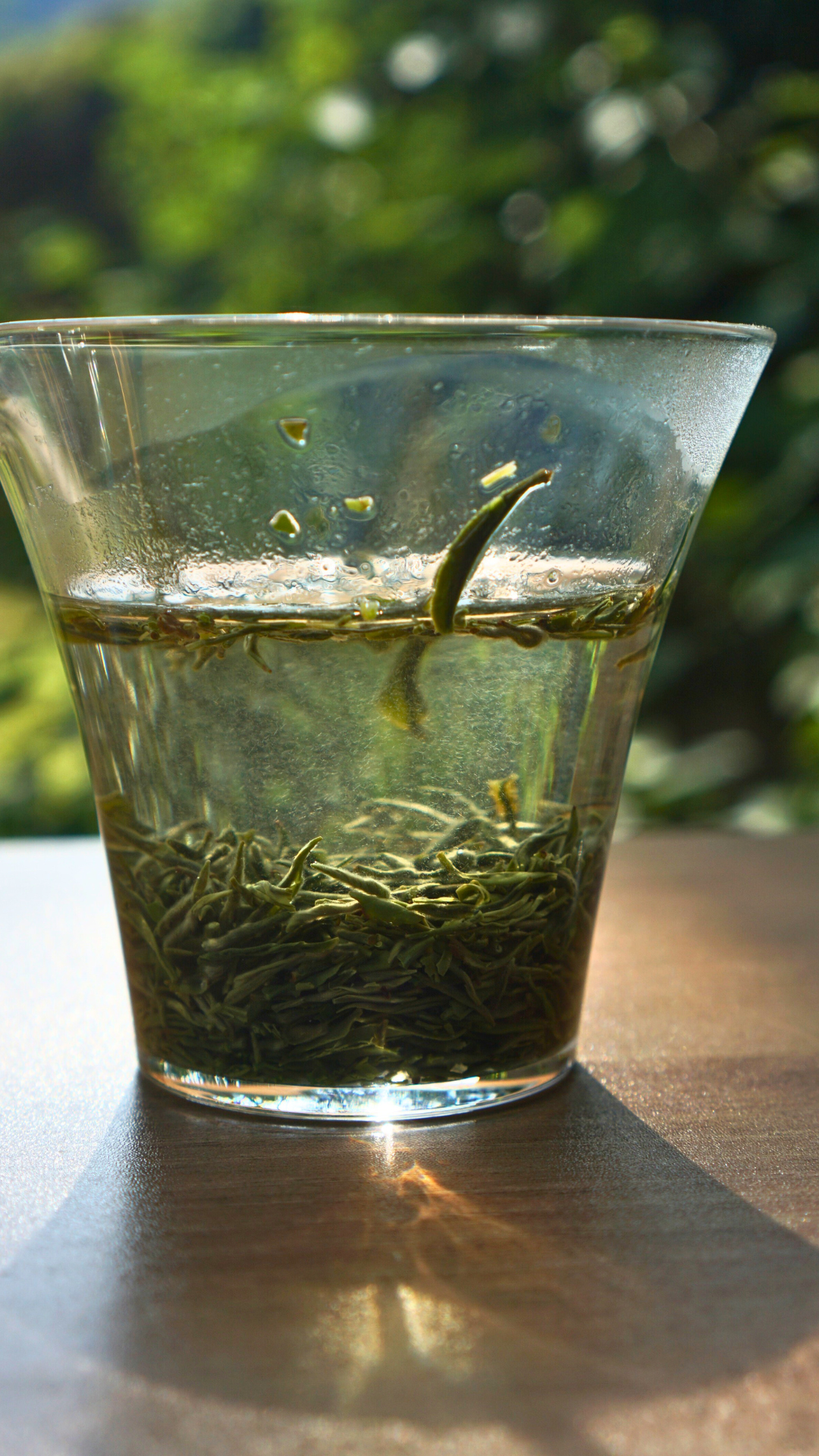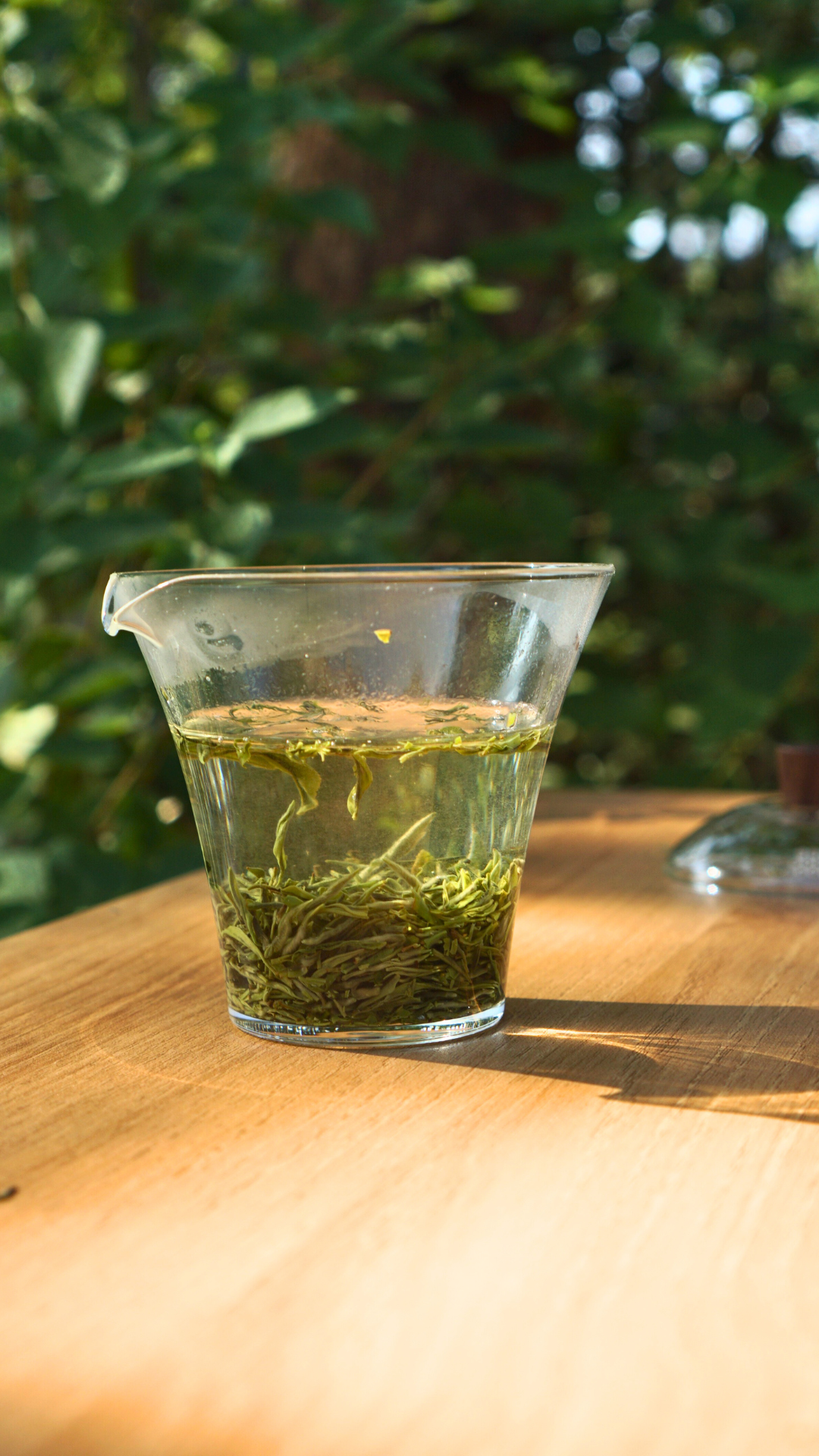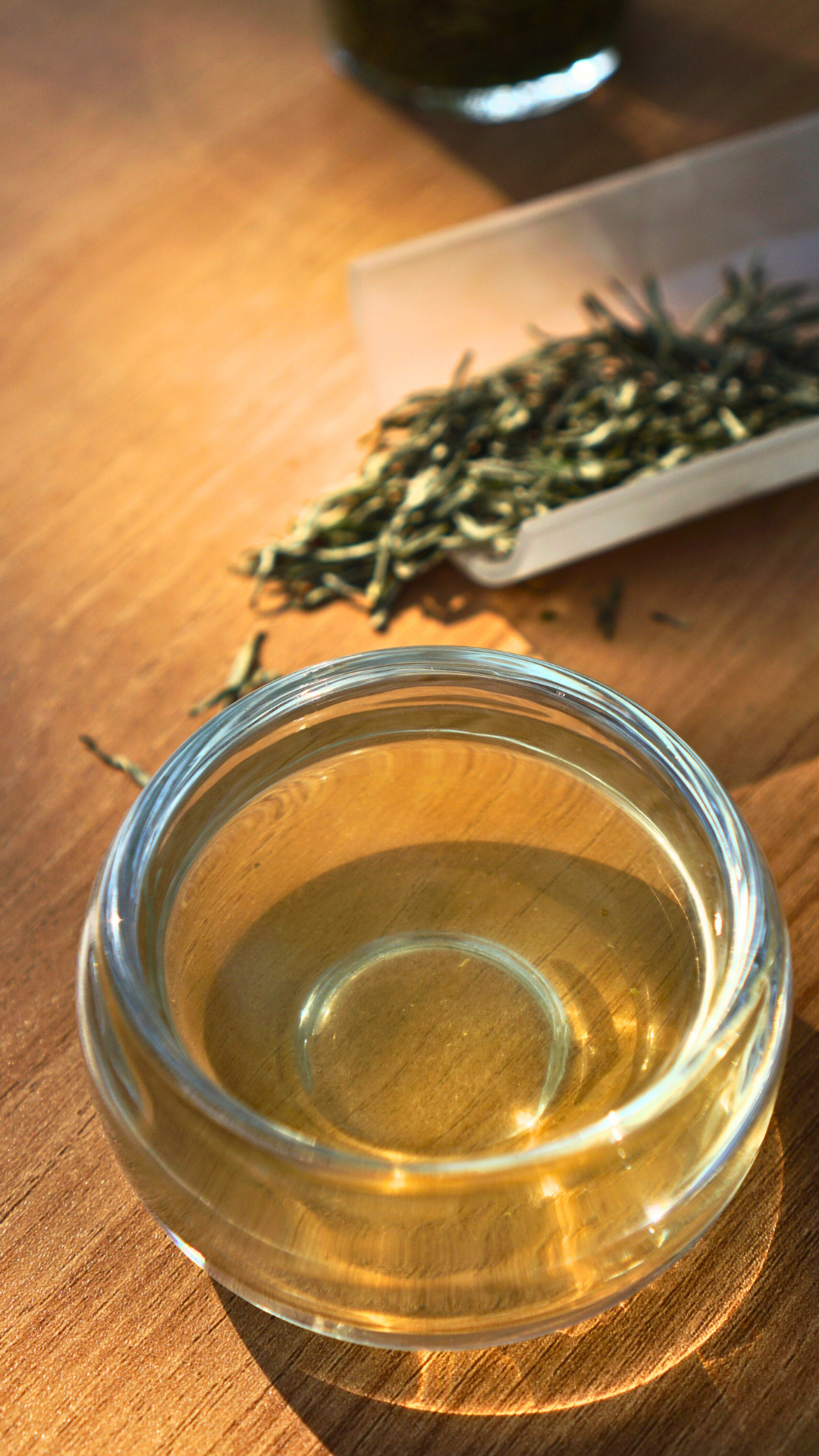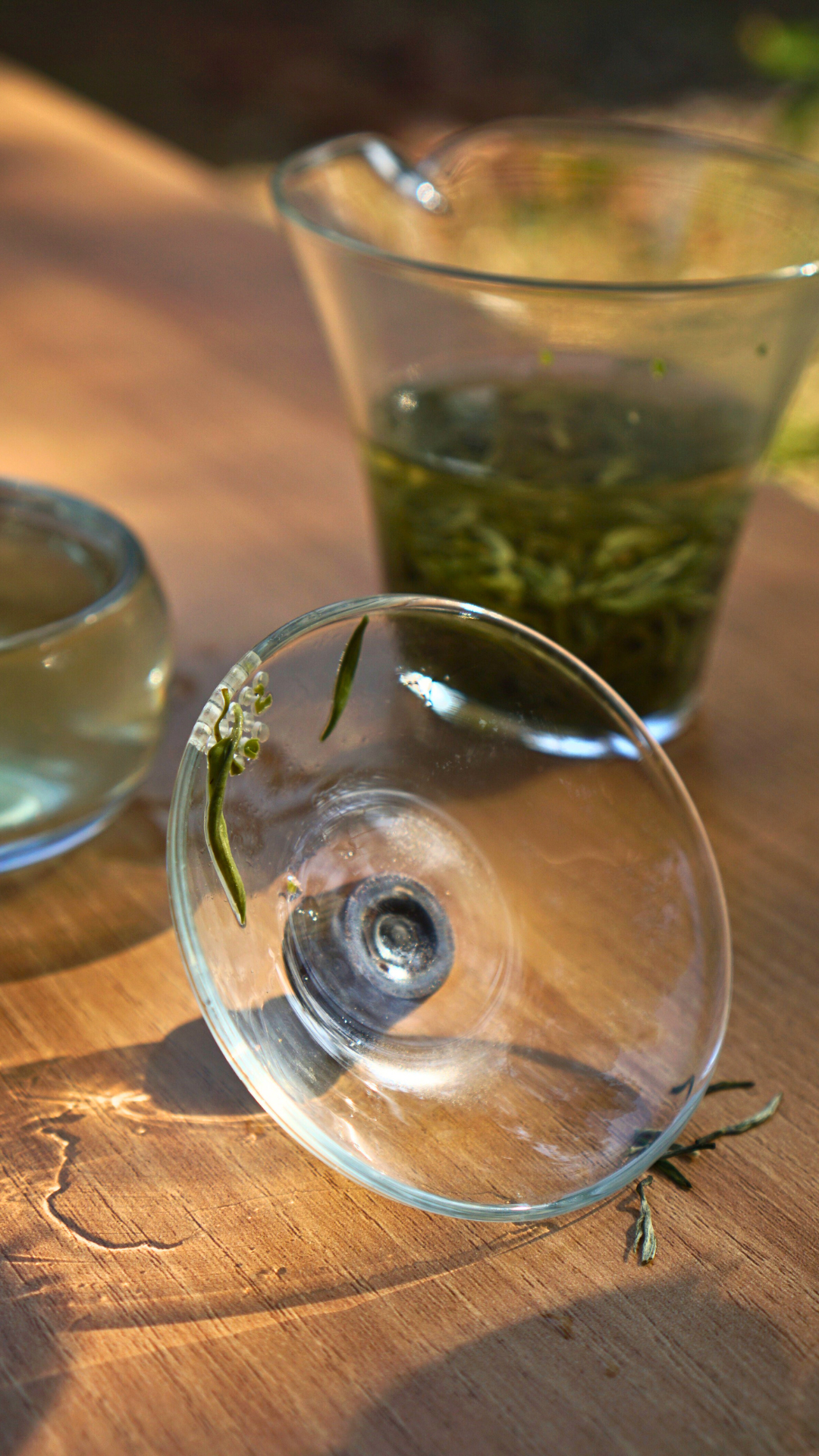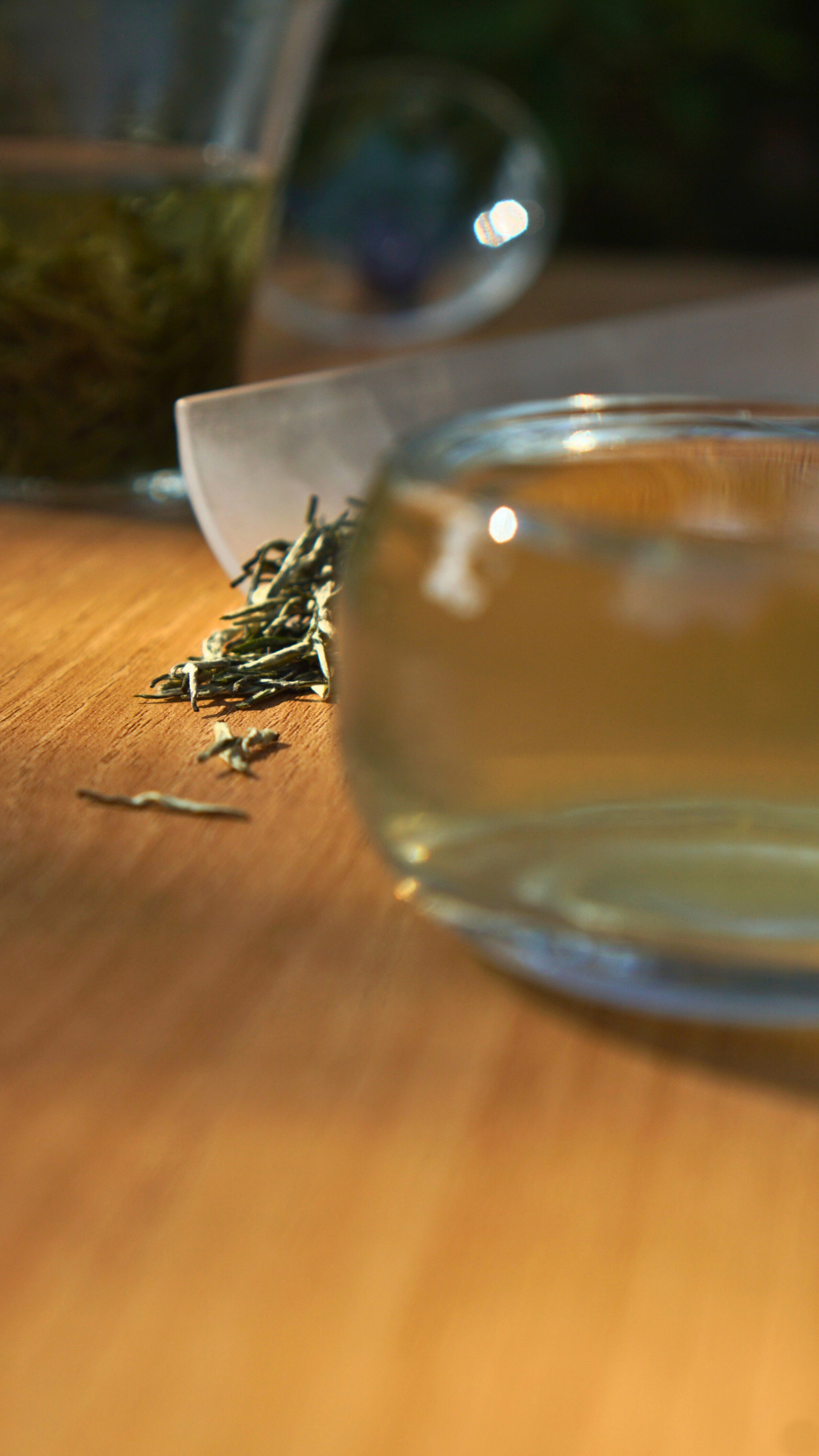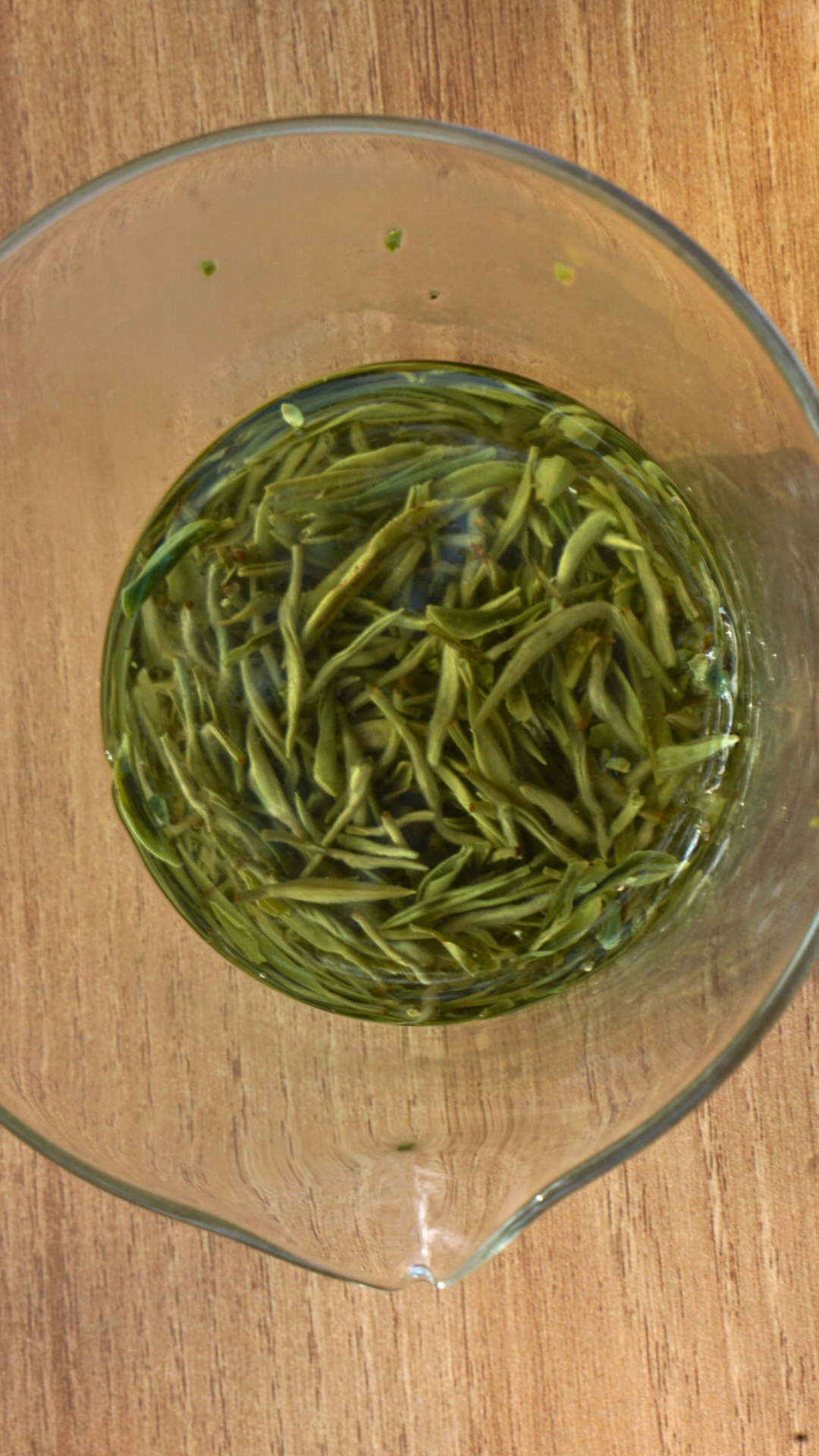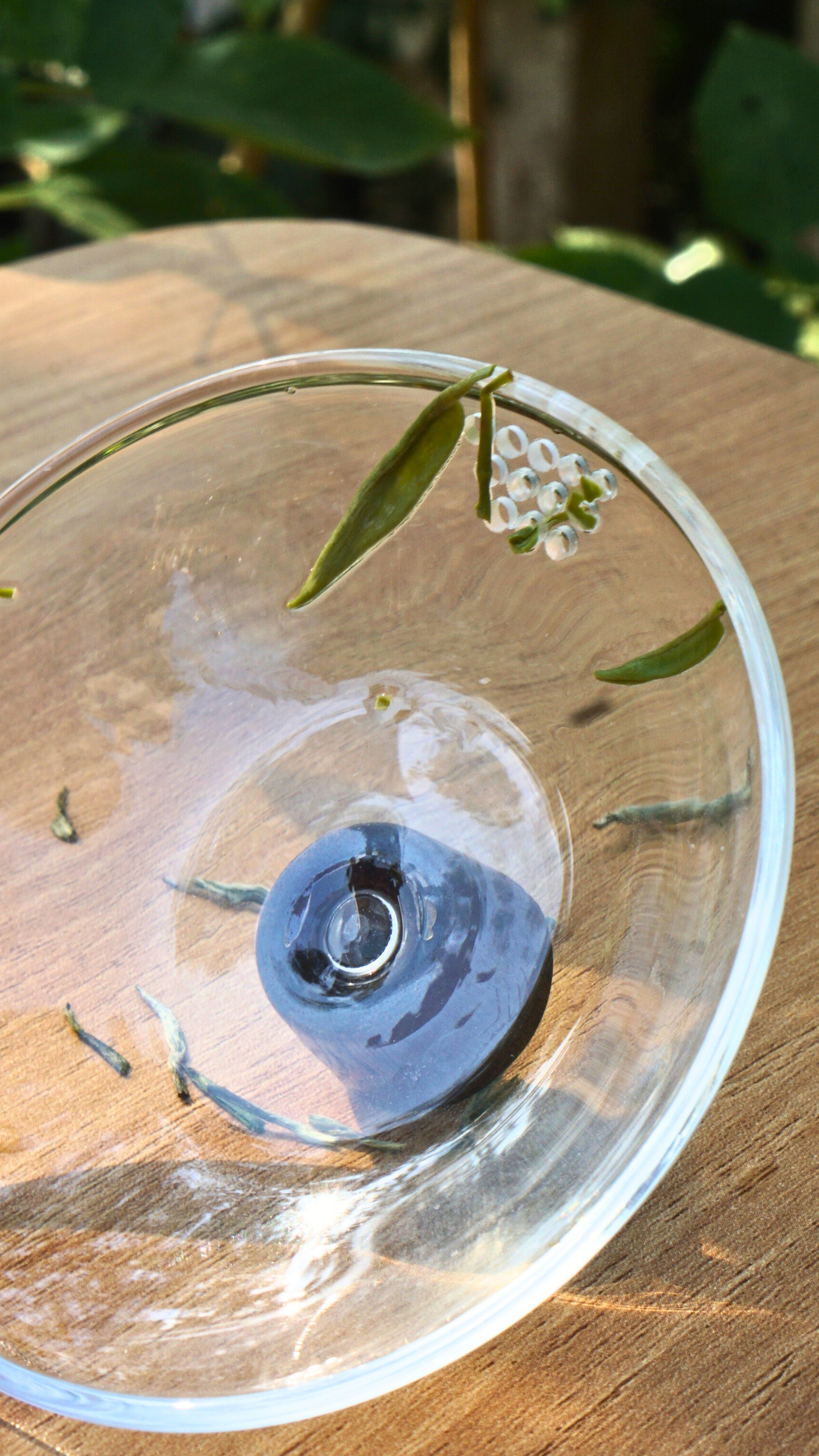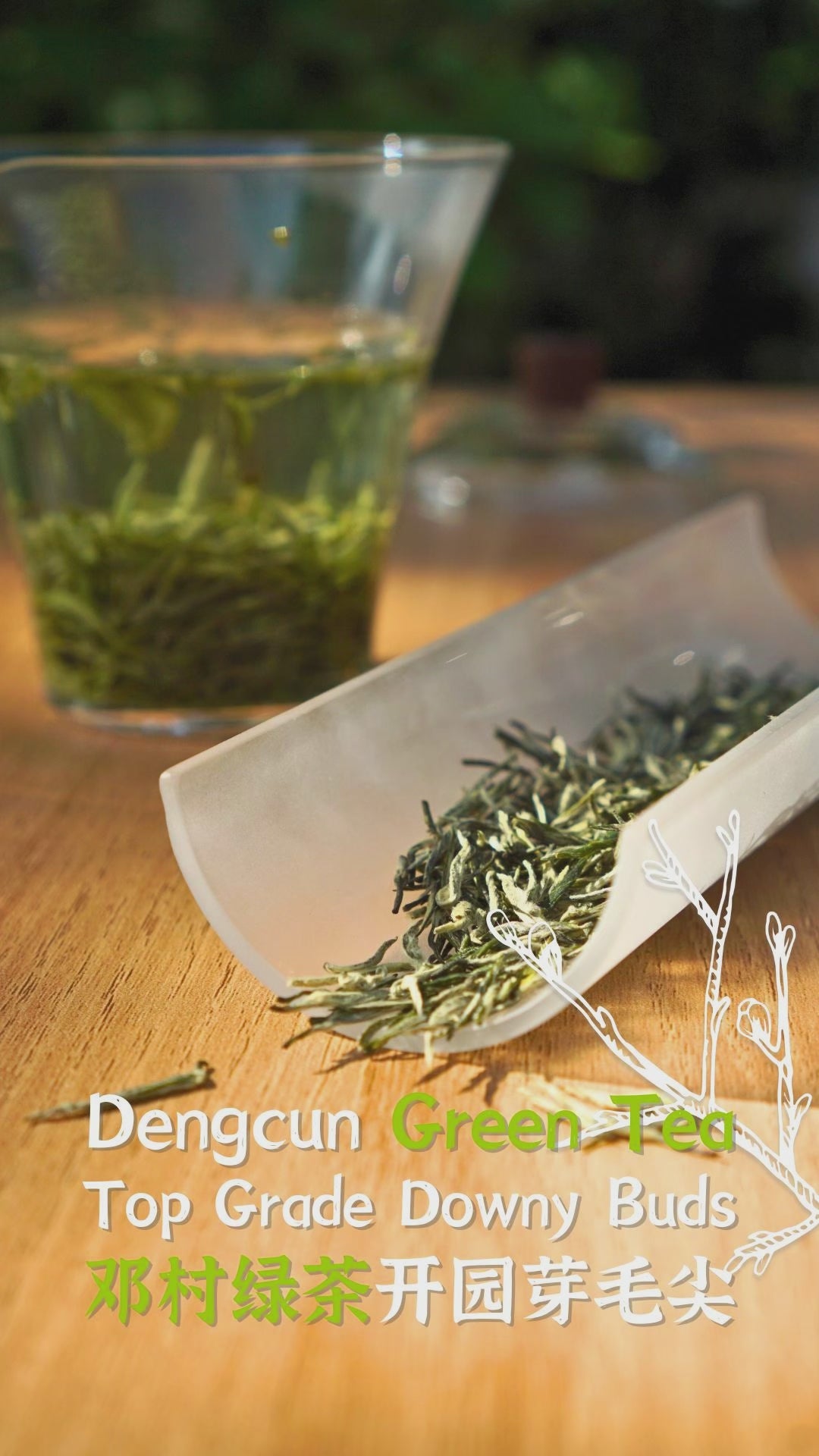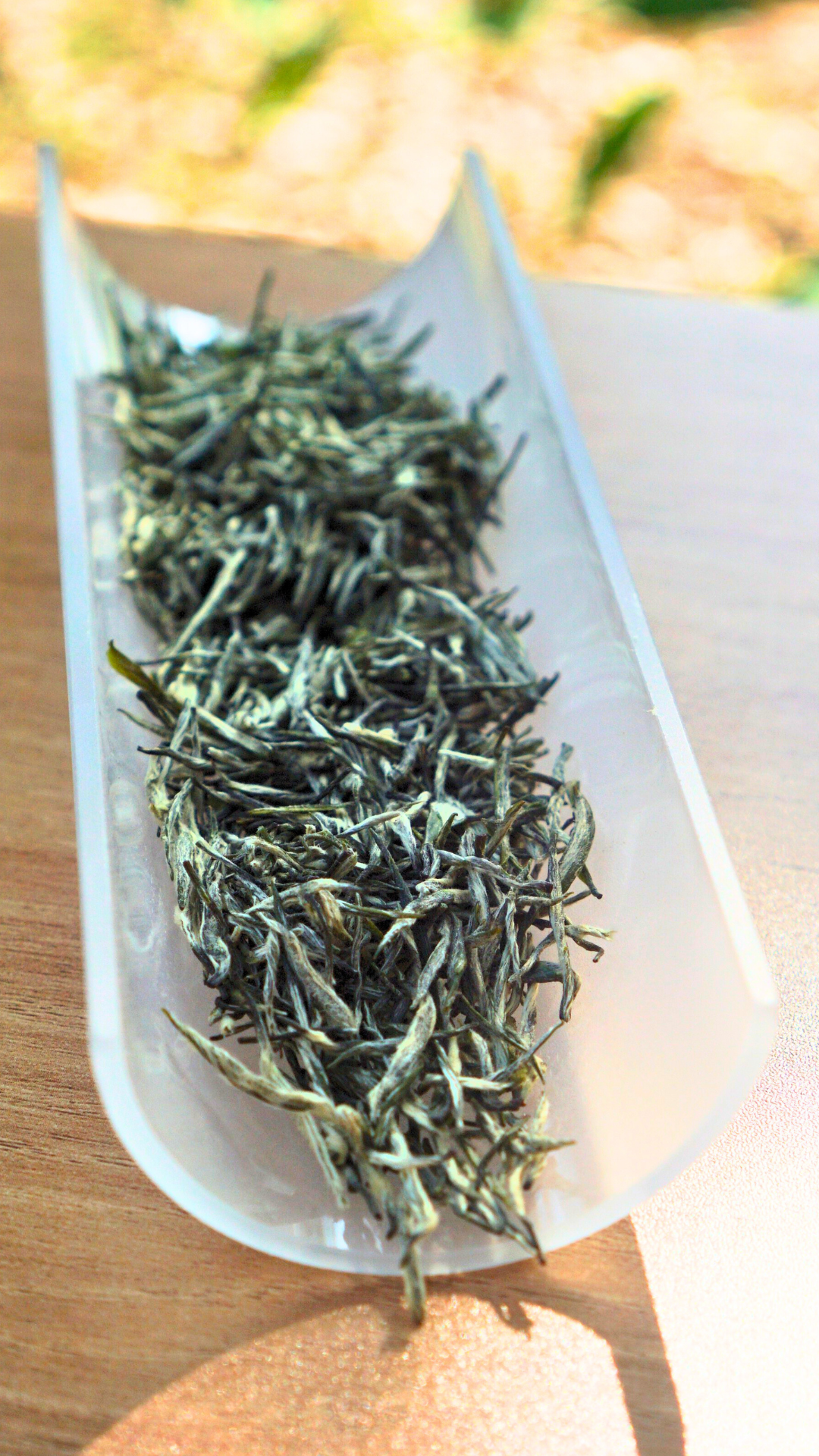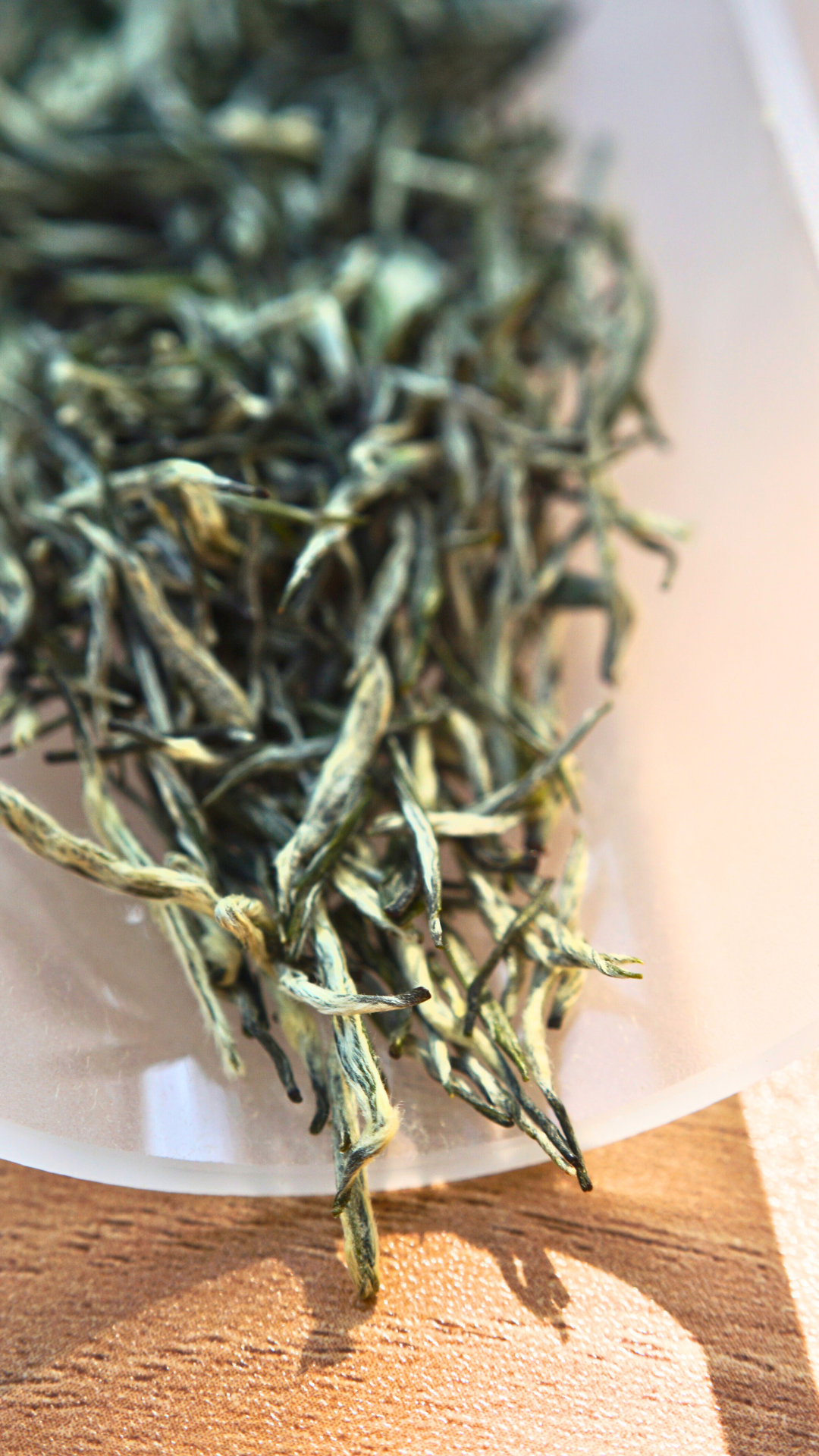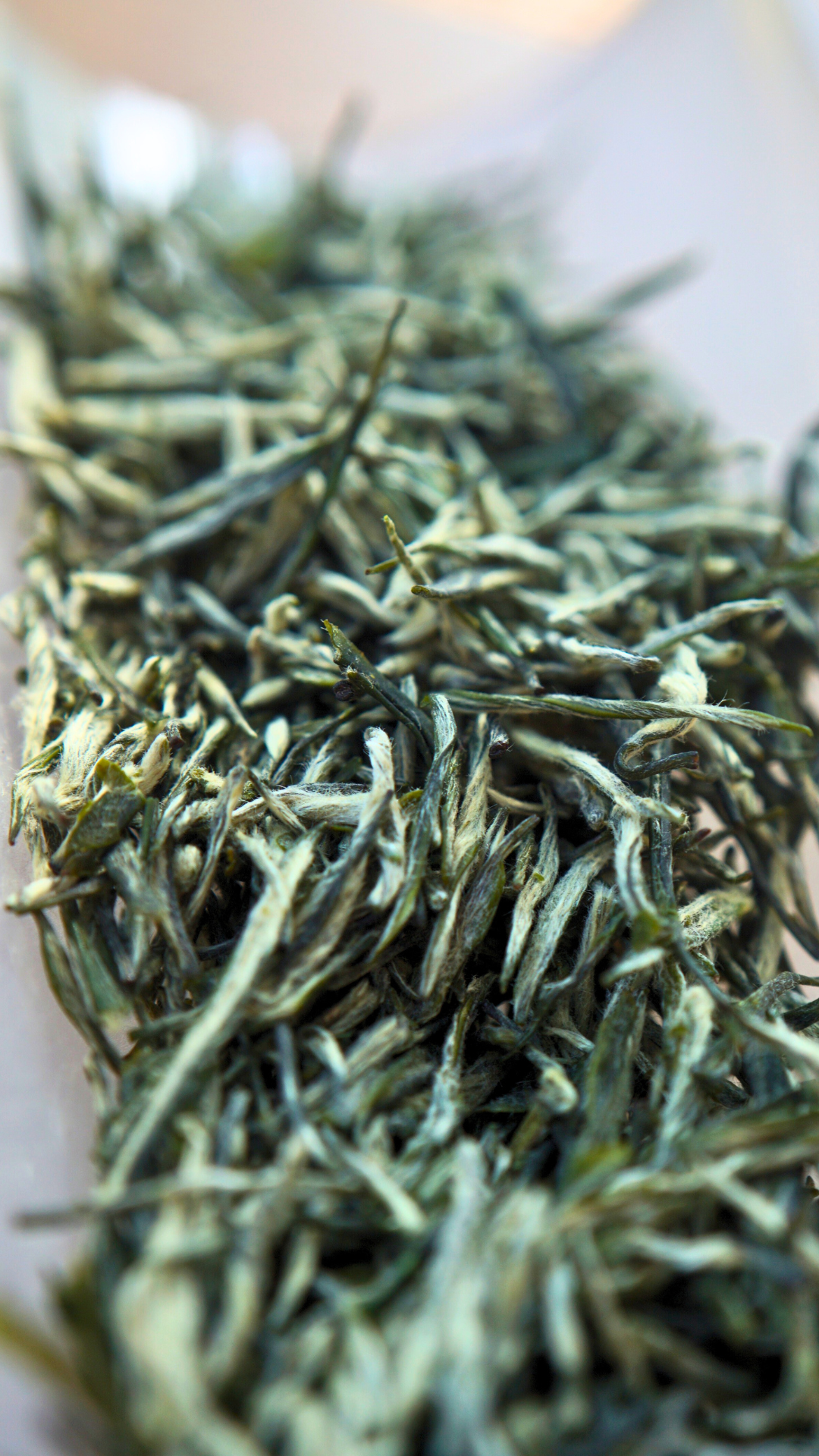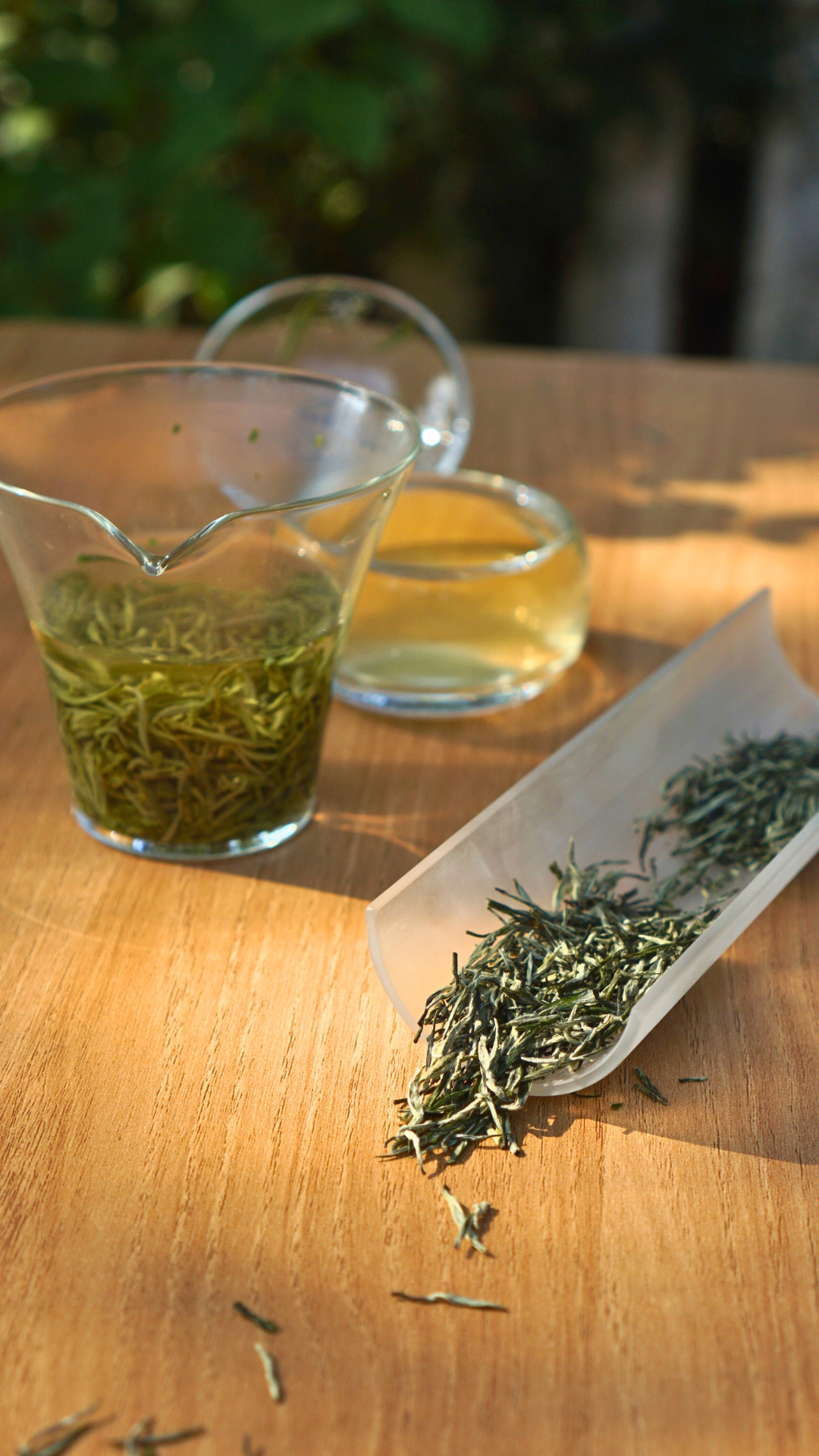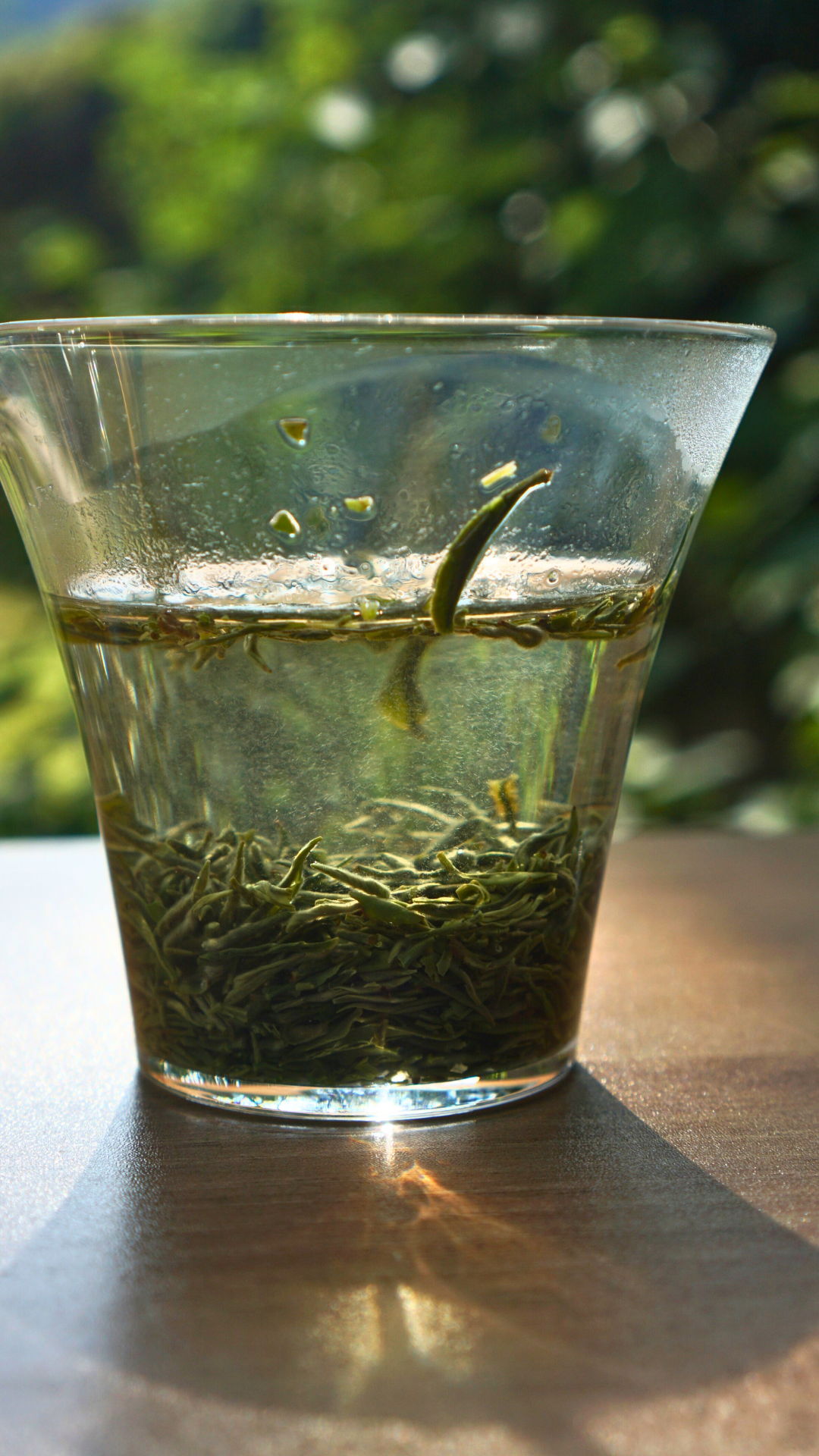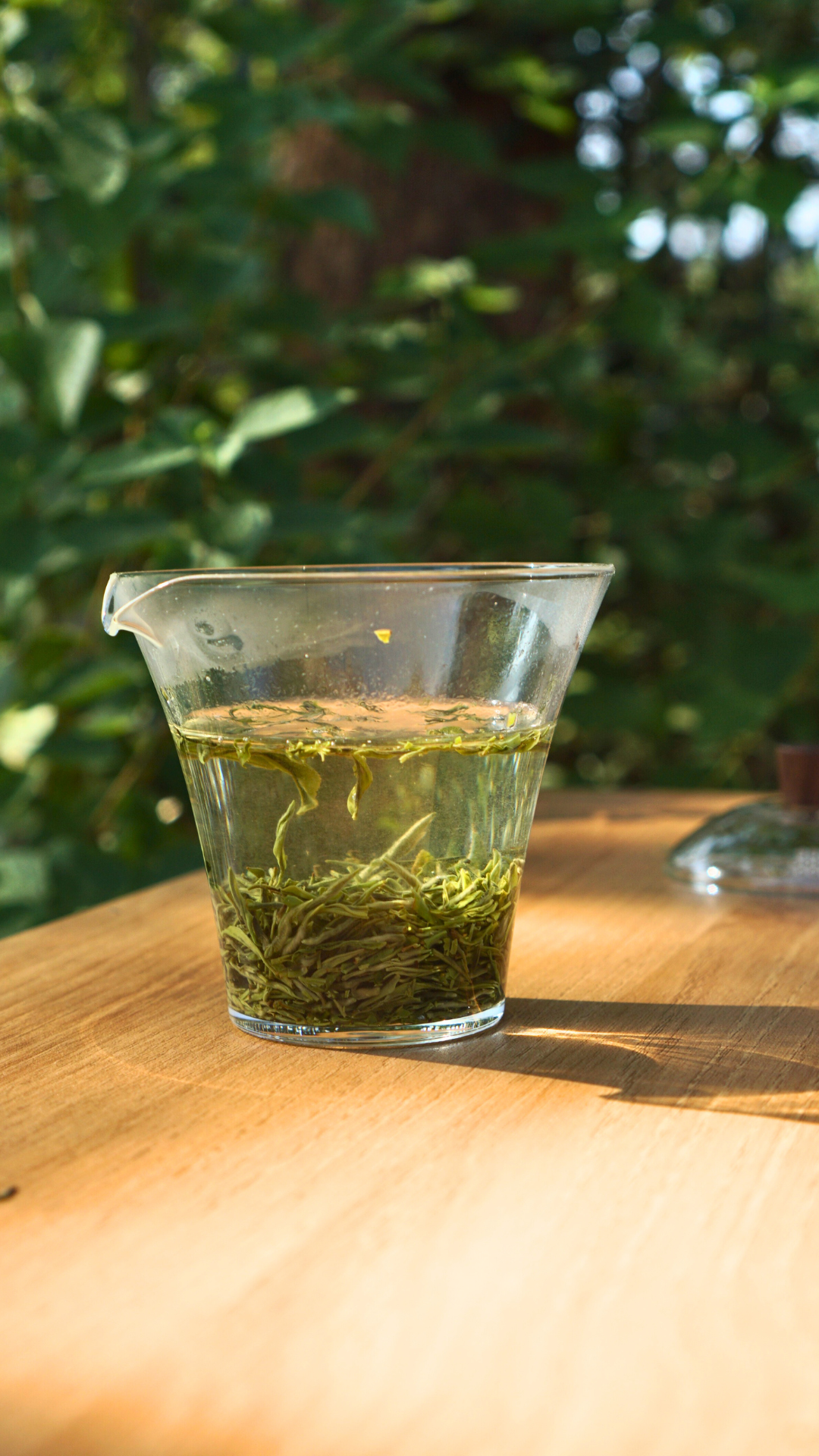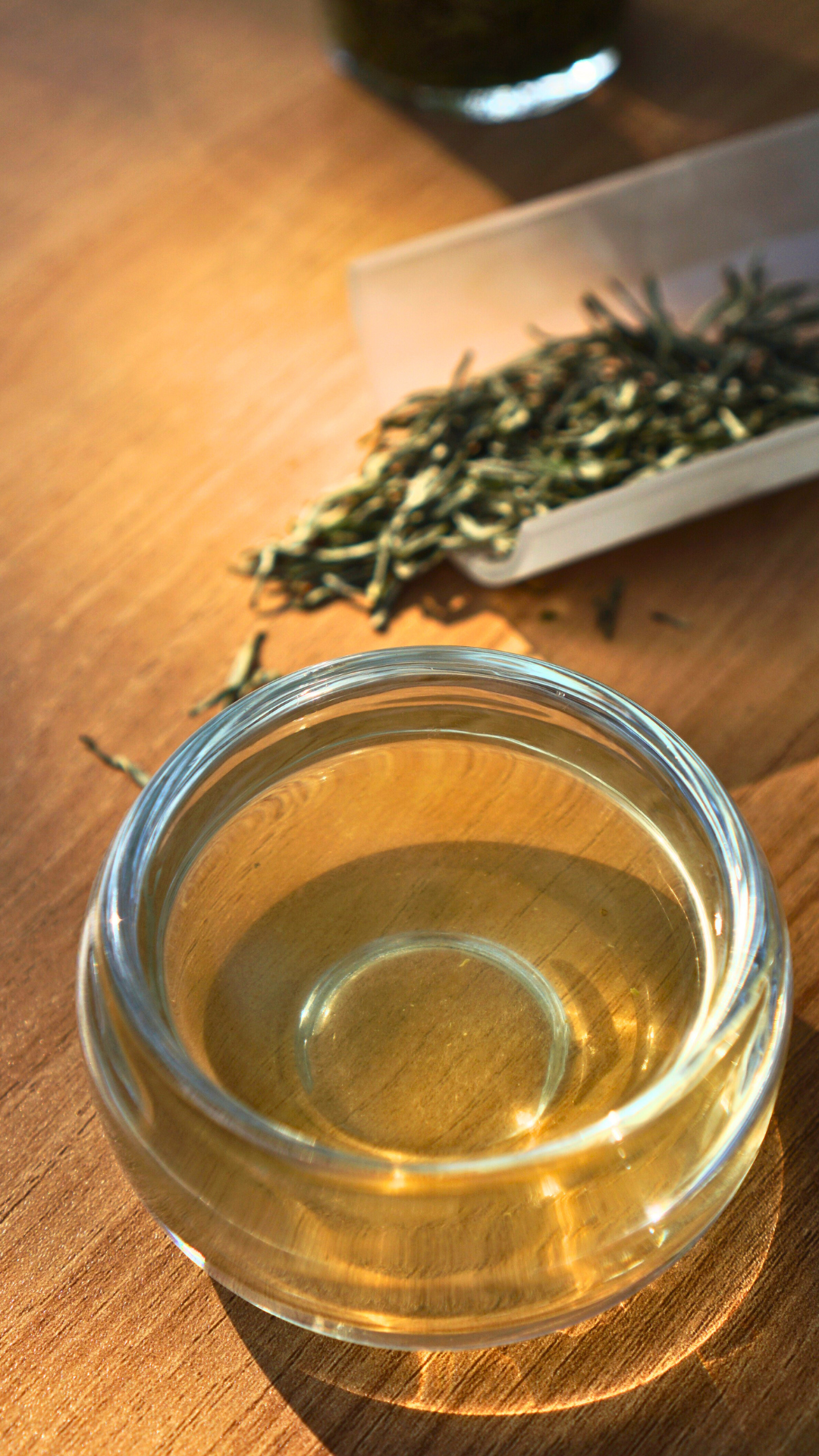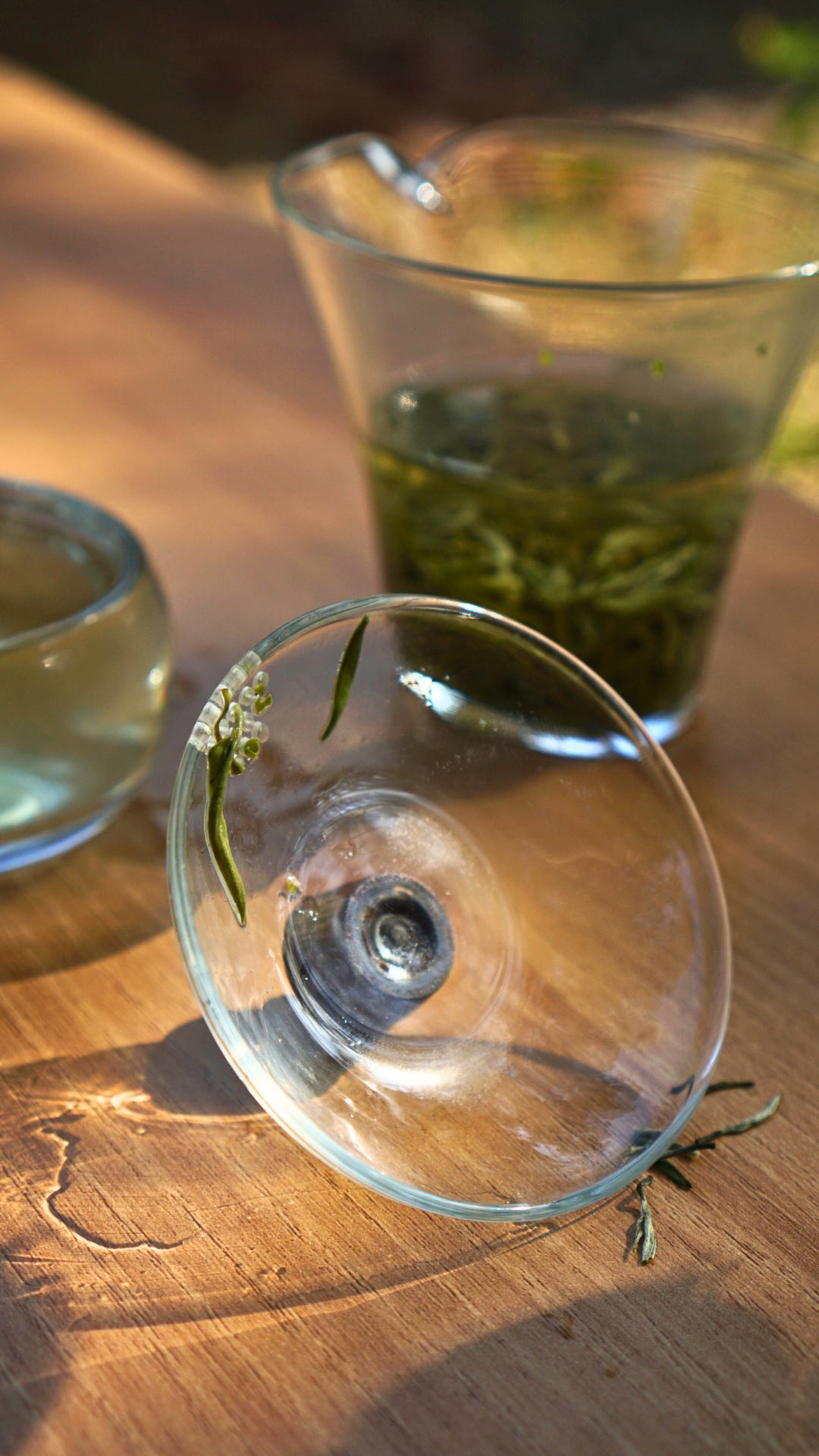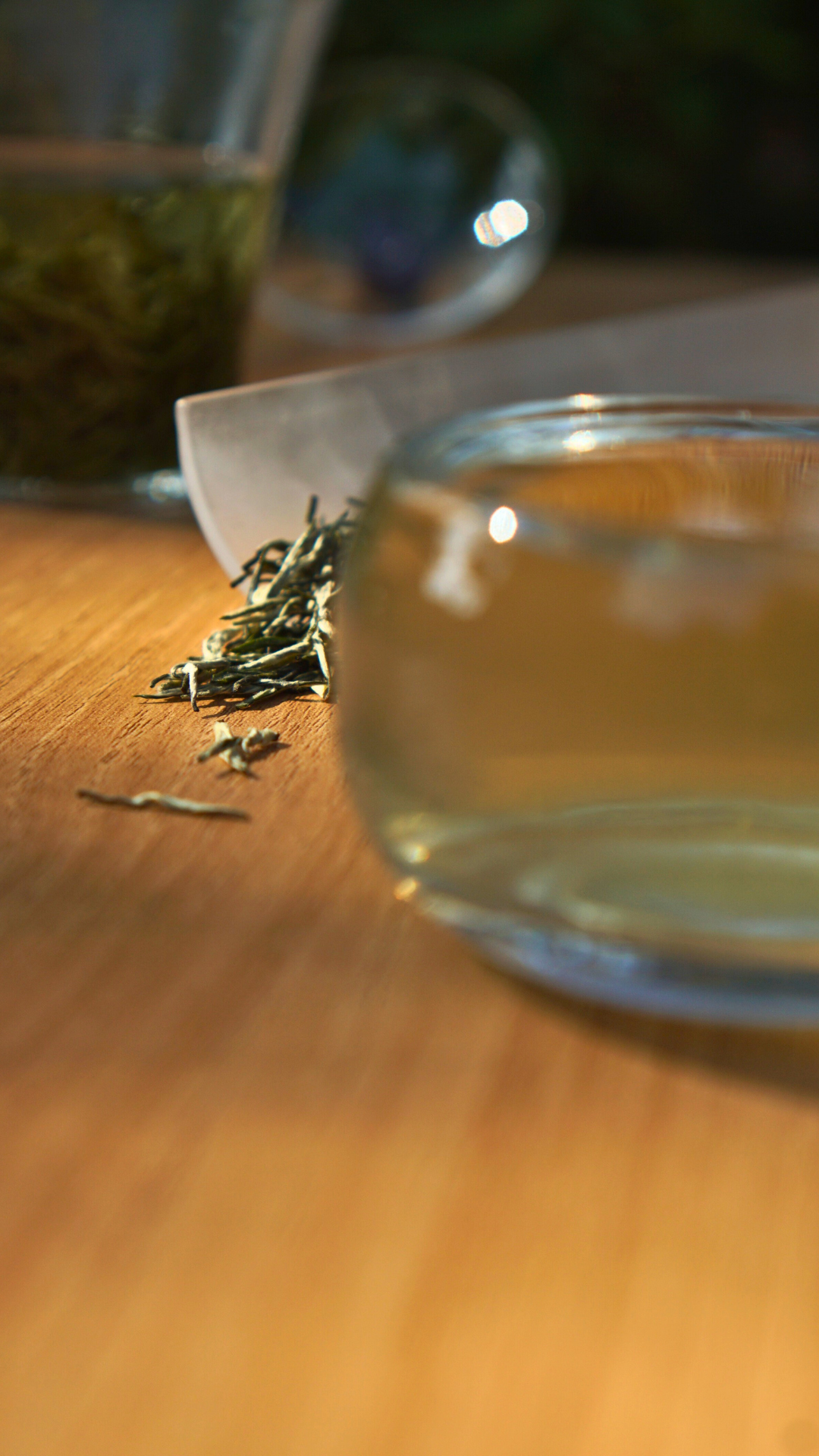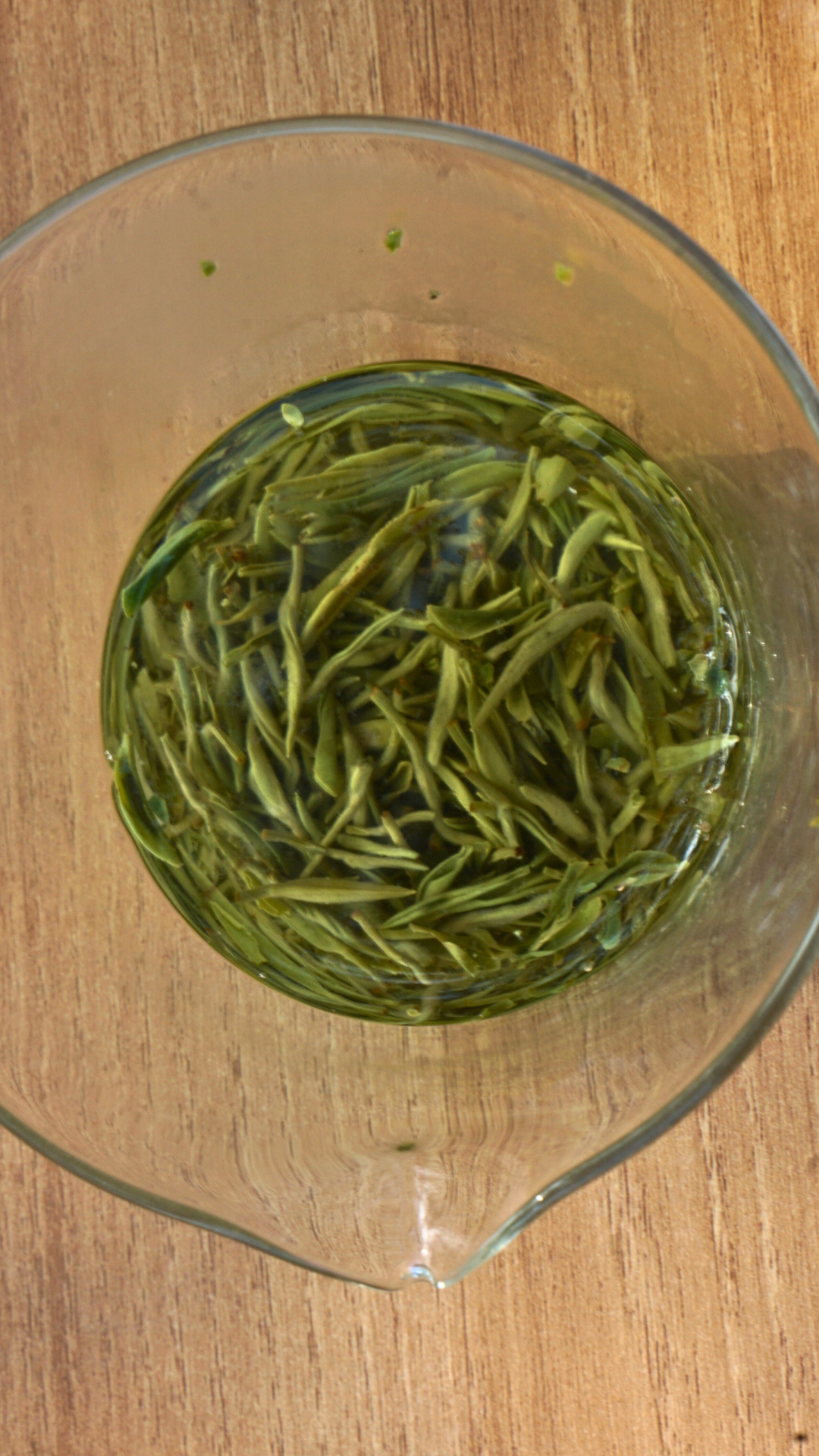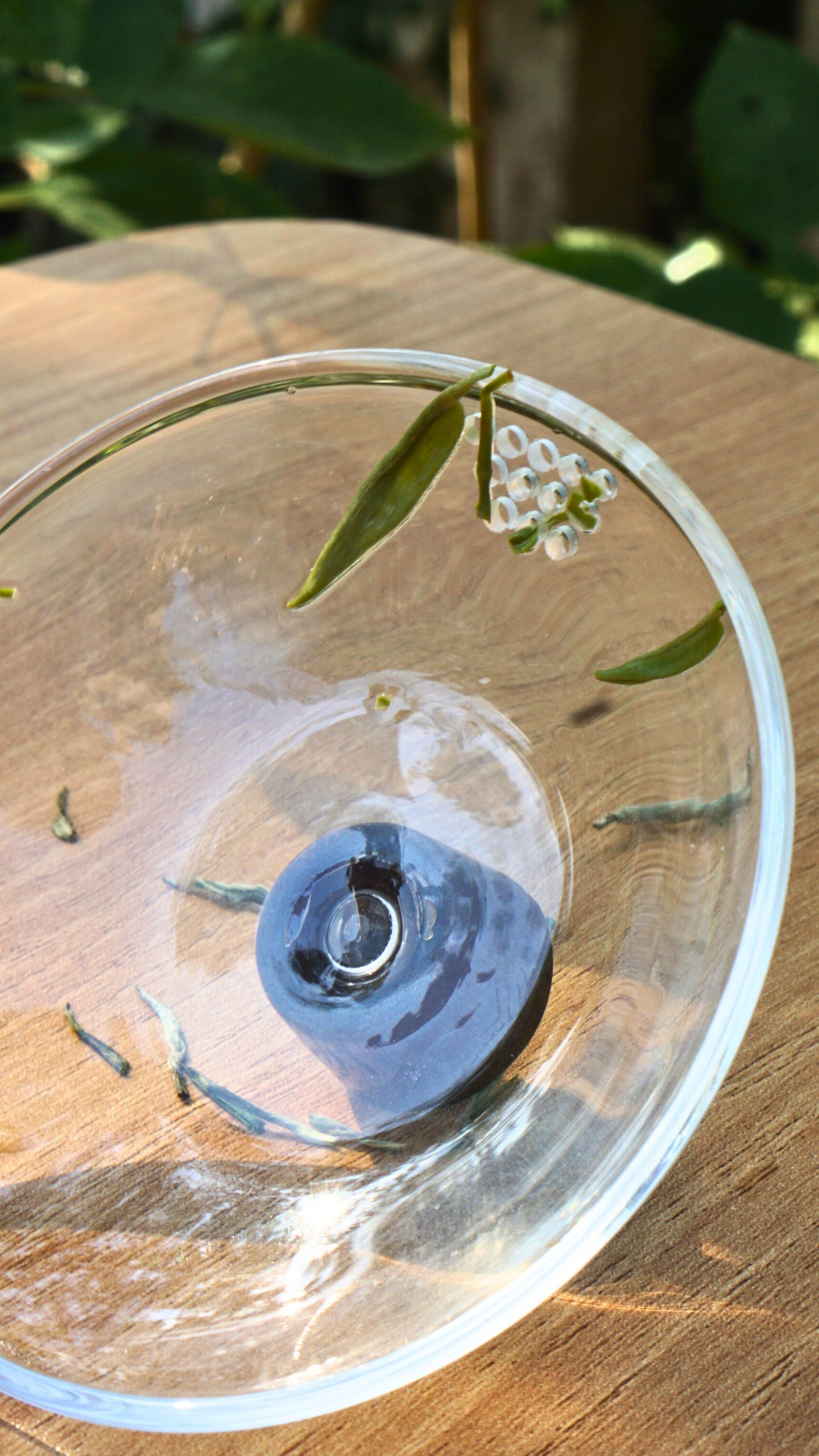Dengcun Green Tea Top Grade Downy Buds
Dengcun Green Tea Top Grade Downy Buds
邓村绿茶开园芽毛尖
This Dengcun green tea is harvested from high-altitude tea gardens above 1,000 meters.
It consists entirely of the first tender buds picked before the Qingming Festival. The tea is handpicked and handmade. Medium-heat pan-firing enhances its fragrance, resulting in tea buds fully covered with white fuzz, accompanied by a fresh and elegant aroma. It represents the highest quality of Dengcun green tea.
The bud content in this tea exceeds 95%, making it extremely tender. The dried tea exhibits a yellow-green color with a faint floral fragrance.
It is recommended to brew it with water below 80 degrees Celsius in an open-lid,top-pouring style. The tea infusion appears yellow-green and bright, with tea fuzz floating on the surface, shimmering in the light.
The taste is smooth, gentle, pleasantly sweet, and refreshing. It carries a light floral aroma mixed with a hint of chestnut fragrance. After drinking, a lingering fragrance remains on the lips and teeth, leaving you feeling refreshed and invigorated. It is a rare high-quality green tea.
Dengcun green tea (邓村绿茶)is a specialty of Yiling District(夷陵区), Yichang(宜昌) City, Hubei Province, and a Chinese National Geographical Indication product. Dengcun Township in Yiling District, known as "China's No. 1 Organic Tea Township," is located on the northern bank of Xiling Gorge(西陵峡) in the Three Gorges area, only 23 kilometers from the Three Gorges Dam.
Dengcun tea grows on mountainous slopes at altitudes of 800 to 1,200 meters. Thanks to the high altitude, significant temperature differences between day and night, the hydrometeorological effects of the Yangtze River and its water system, abundant rainfall, fertile soil, and persistent mountain mist, the area boasts an excellent ecological environment for producing high-quality tea.
According to tests conducted by the Tea Quality Testing Center of the Ministry of Agriculture, Dengcun tea has an amino acid content of 5.76%, with balanced proportions of tea polyphenols and amino acids.
Dengcun green tea has a long history. Yiling(夷陵) District, the main production area, has been a major tea-producing region of Xiazhou(峡州) since the Tang Dynasty, renowned for its premium teas. The tea production history of the region stretches back over 1,700 years.
Picking and Processing
Picking and Processing
This Dengcun green tea is harvested from high-altitude tea gardens above 1,000 meters. It consists entirely of the first tender buds picked before the Qingming Festival. The tea is handpicked and handmade. Medium-heat pan-firing enhances its fragrance.
More info about Green Tea Manufacturing and Processing
Brewing
Brewing
It is recommended to brew it with water below 80 degrees Celsius in an open-lid,top-pouring style.
Pour hot water at around 80°C into a glass until it is 70% full. Add the tea leaves to the water, and when most of the tea leaves sink to the bottom of the cup, fill the glass until it is 90% full. Then it is ready to drink.
Green Tea Storage
Green Tea Storage
It's recommended to store about 50g of green tea in sealed bags in a cool, dark cabinet or drawer for daily use. If room temperature is high, refrigerate at 0-5°C. Store remaining tea sealed in the freezer. This way, green tea can maintain its flavor for up to 2 years.
First, high temperature is the biggest concern in storage. For tea leaves, especially green tea, temperature is the most crucial factor to monitor. This is mainly because high temperatures accelerate the degradation of chlorophyll in green tea, continuously converting it into pheophytin, causing the color to turn dark brown. Research shows that for every 10°C increase in temperature, the rate of browning accelerates 3-5 times, and tea leaves easily become stale. Additionally, high temperatures intensify the auto-oxidation of tea polyphenols, dramatically reducing their content and thereby decreasing the tea's value.
Second, light exposure is another factor to avoid when storing green tea. Especially during summer and autumn when light is much stronger than in other seasons, improper storage can cause plant pigments and lipids in green tea to undergo chemical reactions, producing various off-flavors and resulting in a sun-damaged taste.
Third, foreign odors must be avoided. Particularly in summer and autumn when temperatures are generally higher, items tend to emit strong odors during storage, and green tea easily absorbs these odors, leading to deterioration. Therefore, isolation from foreign odors is essential during storage.
Finally, oxygen is the root cause of off-flavors in almost all stored items. This is because oxygen can catalyze or play a crucial role in many chemical reactions. Tea polyphenols in green tea are strong antioxidants, making them highly susceptible to oxidation. After oxidation, the brewed tea turns deep yellow and loses its fresh green tea aroma.
Common Storage Methods for Green Tea
1. Plastic Bag and Aluminum Foil Storage Method: Choose food-grade plastic bags with seals, preferably those with high density and good material quality. Avoid using scented or recycled plastic bags. After placing tea in the bag, squeeze out as much air as possible. Using a second plastic bag in reverse direction is even better. Clear plastic bags should avoid sunlight exposure. Aluminum foil bags work on similar principles. Additionally, divide purchased tea into separate sealed bags, store them in the refrigerator, and brew in batches to minimize air exposure after opening, thus slowing quality deterioration.
2. Metal Container Storage Method: Choose iron, stainless steel, or dense tin containers. For new containers or those previously used for other items with residual odors, place some tea powder inside, close the lid, shake in all directions to wipe the inner walls, then discard to remove odors. Double-lidded stainless steel tea containers available in the market are convenient and practical. Using clean, odorless plastic bags inside metal containers with tape-sealed lids is even better. Metal containers with tea should be kept in cool, shaded places away from direct sunlight, odors, moisture, and heat sources. This prevents rust and slows tea aging and deterioration. Tin containers are particularly effective at preventing moisture, oxidation, light exposure, and odor absorption.
3. Low-Temperature Storage Method: Maintain tea storage environment below 5°C using refrigeration or freezer storage. Note that for storage periods under six months, refrigeration at 0-5°C is most economical and effective; for periods over six months, freezer storage (-10 to -18°C) is better. Tea should be properly packaged and completely sealed to prevent odor absorption. When purchasing large quantities, divide into small packages (containers) before refrigeration/freezing, and remove only the amount needed for brewing. Avoid repeatedly freezing and thawing the same package.
- Loose Green Tea
- 500g/pouch
- Free Shipping
Couldn't load pickup availability
